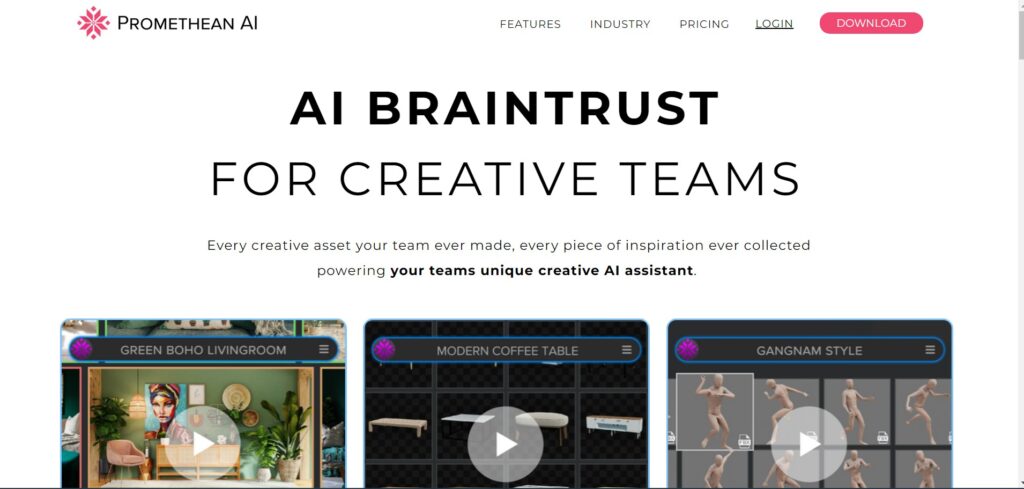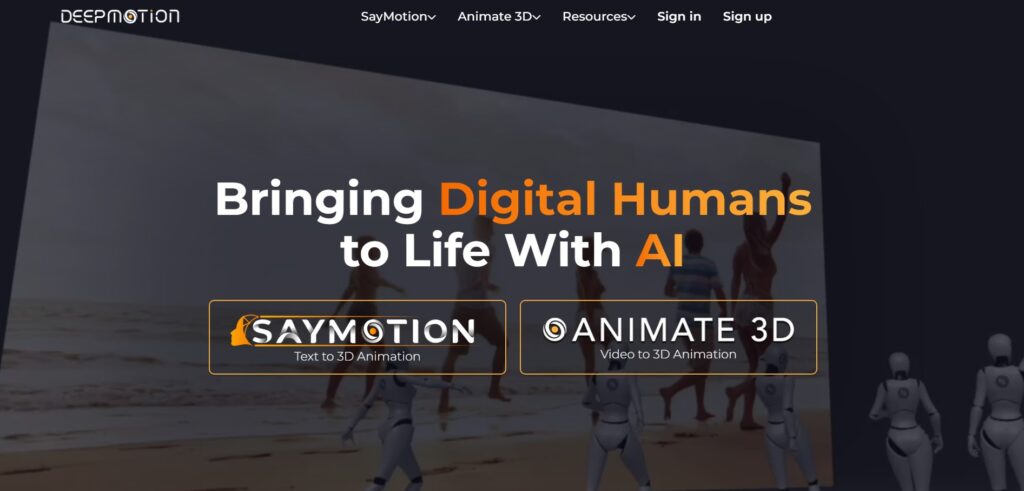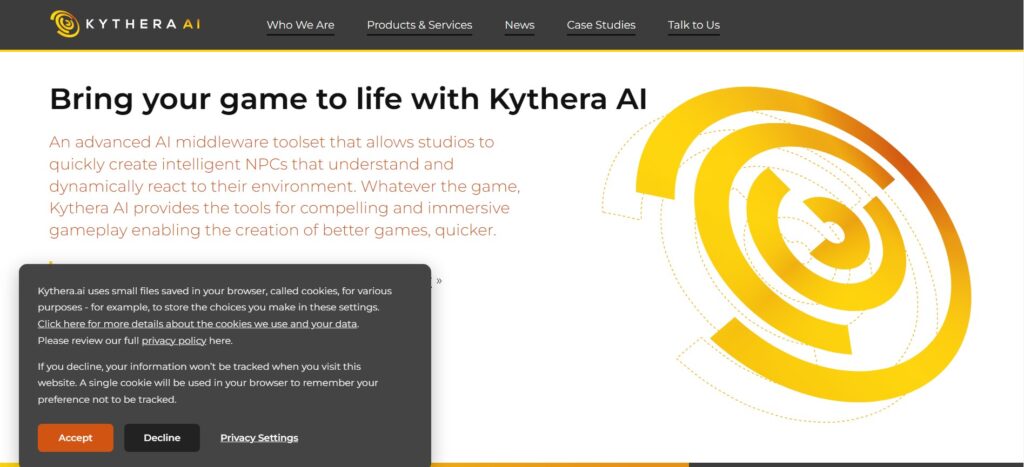AI Gaming Tools
10 AI Tools for Game Development
Artificial Intelligence (AI) is transforming game development in remarkable ways, offering new levels of efficiency, creativity, and realism Through AI Gaming Tools for developers. AI’s integration into the development process is a game-changer. From automating repetitive tasks like testing and debugging to enhancing the player experience with intelligent non-playable characters (NPCs) and dynamic game environments, AI opens up possibilities that were once unimaginable.
AI tools now allow developers to create more adaptive and responsive games. Procedural content generation can automatically build vast, unique worlds, while machine learning algorithms can study player behavior to adjust difficulty levels or provide personalized experiences in real-time. This not only improves gameplay but also reduces development time and costs, allowing us to focus more on innovation and creativity.
In this post, I’ll explore how AI is currently being used in game development, the specific tools that are available, and what these advancements mean for the future of creating more engaging, intelligent, and immersive gaming experiences.
Whether you’re a developer looking to integrate AI into your projects or simply interested in how this technology is reshaping the gaming landscape, this look into AI’s role in game development will offer valuable insights.
1. Unity ML-Agents
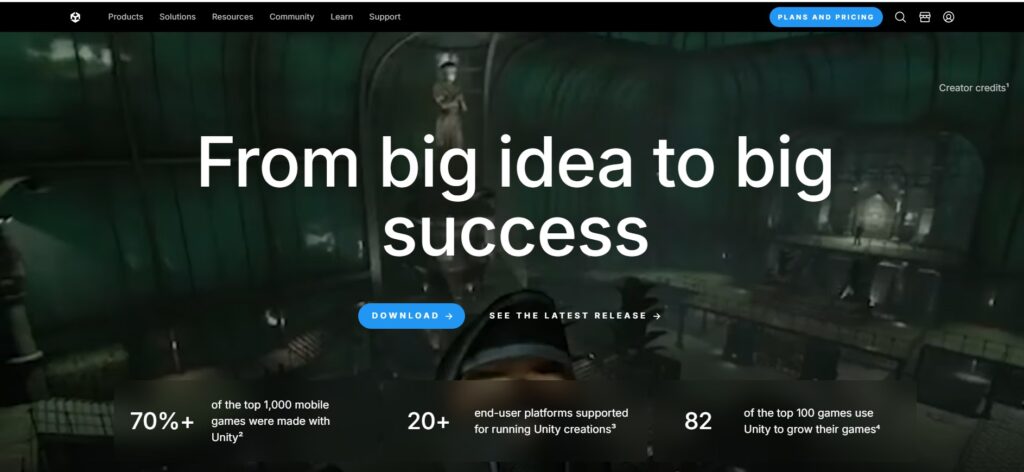
Unity ML-Agents is a machine learning toolkit for training intelligent agents in Unity-based games, allowing developers to integrate AI into their game environments.
Features:
- Open-source toolkit for deep reinforcement learning.
- Enables real-time training of AI agents within Unity simulations.
- Supports imitation learning, reinforcement learning, and supervised learning.
- Flexible API for customising AI behaviour and decision-making.
- Comprehensive documentation and example projects to assist developers.
Use Cases:
- Training NPCs: AI-controlled characters can learn and adapt based on the player’s actions, making gameplay more dynamic.
- Creating smart bots: Perfect for multiplayer or co-op modes where bots need to act intelligently based on player input.
- Adaptive game difficulty: Game difficulty can increase or decrease based on player performance, providing a balanced experience.
- Simulating player behaviours: Developers can train AI to simulate human player behaviours, useful for testing.
- Interactive game environments: AI agents learn how to interact with game objects, creating a more immersive world.
2. Gamefroot
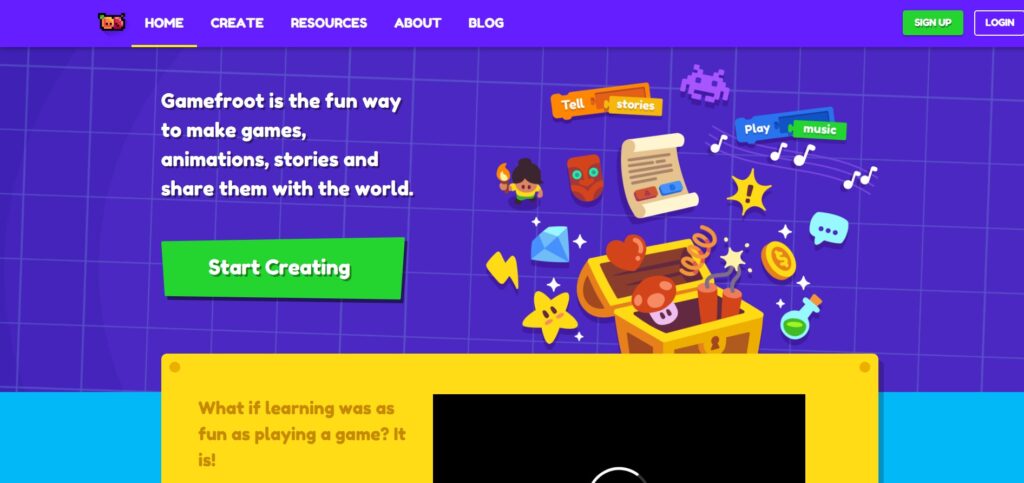
Gamefroot is an intuitive platform designed for developing 2D games without the need for extensive coding knowledge. It leverages AI to assist users in creating game mechanics, level design, and character animations, making game development accessible to all skill levels.
Features:
- User-friendly drag-and-drop interface for game creation.
- AI-driven suggestions for game mechanics and design.
- Built-in asset library for quick access to characters, environments, and objects.
- Collaboration features for team-based game development.
- Export options for various platforms, including web and mobile.
Use Cases:
- Educational games: Perfect for educators and students to create interactive learning experiences without needing coding expertise.
- Rapid prototyping: Quickly design and test game concepts and mechanics without extensive programming.
- Team projects: Facilitate collaborative game development with tools for sharing and co-editing projects.
- Simple mobile games: Develop 2D games that can be easily exported to mobile platforms for casual play.
- Game jams: Ideal for game developers participating in game jams, allowing them to create and submit games rapidly.
3. GDevelop
GDevelop is an open-source AI gaming tool for game development platform that utilises AI to streamline the game creation process, enabling developers to build 2D games without prior programming experience. Its visual scripting system makes it easy to implement complex logic through simple actions.
Features:
- Visual event system for programming game logic without coding.
- Extensive library of pre-built game templates and assets.
- AI-driven tutorials and guides for beginners.
- Supports export to web, mobile, and desktop platforms.
- Community-driven asset marketplace for sharing and finding game resources.
Use Cases:
- Indie game development: An excellent choice for independent developers looking to create games without a large budget.
- Game prototypes: Quickly prototype and test game ideas before investing in more detailed development.
- Learning tool for programming: Helps beginners grasp fundamental programming concepts through a visual interface.
- Community-driven projects: Collaborate with others in the GDevelop community to create and share games and resources.
- Cross-platform releases: Easily export games to multiple platforms, increasing accessibility for players.
4. IBM Watson AI
IBM Watson AI offers powerful AI tools for natural language processing, voice interaction, and real-time analytics, making it a great choice for integrating smart dialogue systems, analytics, and personalisation into games.
Features:
- Natural language processing for interactive dialogue systems.
- AI-driven speech recognition and text-to-speech features.
- Powerful analytics tools to understand and personalise player experiences.
- Real-time analysis of player behaviour to tweak game mechanics.
- Cloud-based platform for easy integration into existing systems.
Use Cases:
- Interactive NPCs: Create dialogue systems where NPCs can respond to player questions or actions intelligently.
- Voice-activated gameplay: Players can use voice commands to interact with the game world or NPCs.
- Player behaviour analytics: Watson can help analyse how players interact with your game, making adjustments to gameplay accordingly.
- In-game personalisation: Tailor the game experience to individual player preferences based on data-driven insights.
- Emotionally responsive characters: Create NPCs that change their behaviour based on the emotional tone of the player’s voice.
5. DeepMind AI
DeepMind, a subsidiary of Alphabet, is known for its work in developing AI capable of mastering complex games like StarCraft II. Its deep learning and reinforcement learning models push the boundaries of intelligent game agents.
Features:
- Uses reinforcement learning to teach AI agents complex strategies.
- Deep learning for sophisticated pattern recognition in gameplay.
- Adaptable to real-time strategy games, simulating human-like decision-making.
- Scalable to complex games with large environments and many variables.
- Has a proven track record in outperforming human players in strategy games.
Use Cases:
- Competitive AI opponents: Train AI to compete against human players in real-time strategy games.
- Simulating human players: Use AI to simulate human players in complex, large-scale multiplayer environments.
- Intelligent enemy behaviour: AI agents can react to real-time player strategies, making gameplay more dynamic.
- Optimising game mechanics: Test different game mechanics by simulating thousands of matches with AI agents.
- Improved game testing: AI agents can simulate a wide variety of player behaviours to test game balance and mechanics.
6. Promethean AI
Promethean AI is an innovative tool designed to assist game developers in creating 3D game environments through AI-powered assistance. The tool uses natural language commands to generate in-game assets, helping streamline the creative process.
Features:
- AI-assisted 3D content creation.
- Natural language interface for asset generation.
- Integration with popular game engines.
- Customisable art styles and themes.
- Rapid prototyping for level design.
Use Cases:
- Rapid world-building: Developers can quickly generate large, detailed environments using AI, significantly reducing design time.
- Asset creation: Automatically generate furniture, landscapes, or architectural elements based on developer instructions.
- Level design prototyping: AI helps create environments for testing gameplay mechanics and ideas.
- Customisation of game elements: Tailor asset appearance and behaviour using simple commands, accelerating iteration.
- Collaborative design: Promethean AI allows multiple team members to work together on generating game worlds interactively.
7. Modl.AI
Modl.AI provides an AI-powered framework for testing, gameplay analysis, and player modelling. It’s designed to help developers optimise their games and improve player experiences through data-driven insights.
Features:
- Automated testing and bug detection.
- Player behaviour modelling.
- Gameplay analytics to improve mechanics.
- AI-powered QA and game-balancing tools.
- Simulates thousands of gameplay scenarios for optimisation.
Use Cases:
- Automated QA testing: Modl.AI allows developers to simulate thousands of playthroughs to catch bugs, balance issues, or gameplay exploits before launch.
- Player behaviour prediction: Understand how players might interact with the game to design mechanics that cater to diverse playstyles.
- Game difficulty tuning: Use AI models to balance gameplay difficulty for different player skill levels.
- In-game optimisation: Improve load times, framerates, and game performance by testing multiple environments through simulations.
- Analytics-driven design: Use player data to make data-driven decisions on game updates and new features.
8. DeepMotion
DeepMotion uses AI to create realistic animations for characters and objects in 3D games. Its motion capture and physics-based simulation system ensures that movements and interactions feel natural and lifelike.
Features:
- AI-powered motion capture without the need for traditional hardware.
- Physics-based animations for realistic movement.
- Real-time character animation editing and retargeting.
- Compatible with most major 3D software and game engines.
- Cloud-based motion simulation.
Use Cases:
- Character animation: Automatically generate realistic animations for characters in action, sports, or combat games.
- Physics-based interactions: Enhance realism by simulating accurate physical interactions between characters and objects.
- Game cinematics: Use AI to create lifelike cutscenes and in-game cinematics.
- Motion capture for indie developers: Offer high-quality motion capture animations without expensive equipment.
- Real-time feedback: Adjust and fine-tune character movements in real-time to suit the game’s needs.
9. Kythera AI
Kythera AI provides a comprehensive toolkit for creating highly advanced AI behaviours in video games, offering developers control over NPCs and other game agents. It is known for its scalability and complex decision-making capabilities for non-player characters.
Features:
- Advanced NPC behaviour modelling.
- Supports hierarchical decision-making for AI agents.
- Pathfinding and navigation for large-scale environments.
- Multi-agent AI coordination.
- Customisable AI for a wide range of game genres.
Use Cases:
- Complex NPC behaviours: Develop AI-driven NPCs with diverse and adaptive behaviours for action, RPG, and simulation games.
- AI coordination in team-based games: Create bots that work together, perfect for multiplayer or co-op scenarios.
- Dynamic enemy AI: Develop enemies that adjust their strategies and tactics based on player actions and evolving game scenarios.
- AI-controlled quest systems: Use AI to generate dynamic quests or missions that react to the player’s decisions.
- Pathfinding in open worlds: Create AI agents that can navigate vast, open-world environments with complex obstacles.
10. Cascadeur
Cascadeur is an AI-powered tool designed to help developers create realistic character animations for video games. Its unique physics-based animation system ensures that character movements are smooth and accurate, reducing the workload for animators.
Features:
- AI-assisted character animation.
- Physics-based movement simulation.
- Supports manual adjustments and fine-tuning of animations.
- Designed for both 2D and 3D game characters.
- Keyframe animation tools to refine movements.
Use Cases:
- Action game character animation: Automatically generate lifelike movements for characters in fast-paced action games.
- Sports game animation: Animate athletes with natural motion, improving realism in sports simulations.
- Combat choreography: Develop intricate combat animations for fighting games or RPGs.
- Realistic movement for platformers: Ensure characters move fluidly and react to environments with physics-based accuracy.
- Cinematic sequences: Create detailed cutscenes with smooth, dynamic character animations.
In conclusion: the integration of artificial intelligence in game development is ushering in a new era of creativity, efficiency, and player engagement. As we harness the power of AI tools, we can streamline our workflows, automate tedious processes, and create dynamic, immersive experiences that adapt to individual player preferences. This not only enhances gameplay but also empowers developers to focus on what truly matters—innovation and storytelling.
The future of game development looks promising, with AI driving advancements that allow us to push the boundaries of what’s possible in gaming.
As AI technology continues to evolve, I’m excited to see how it will shape the industry, enabling us to create richer, more engaging worlds and characters that resonate with players on a deeper level.
Embracing AI in our development processes is not just a trend; it’s a vital step towards a more interactive and personalized gaming experience that can captivate audiences for years to come.



